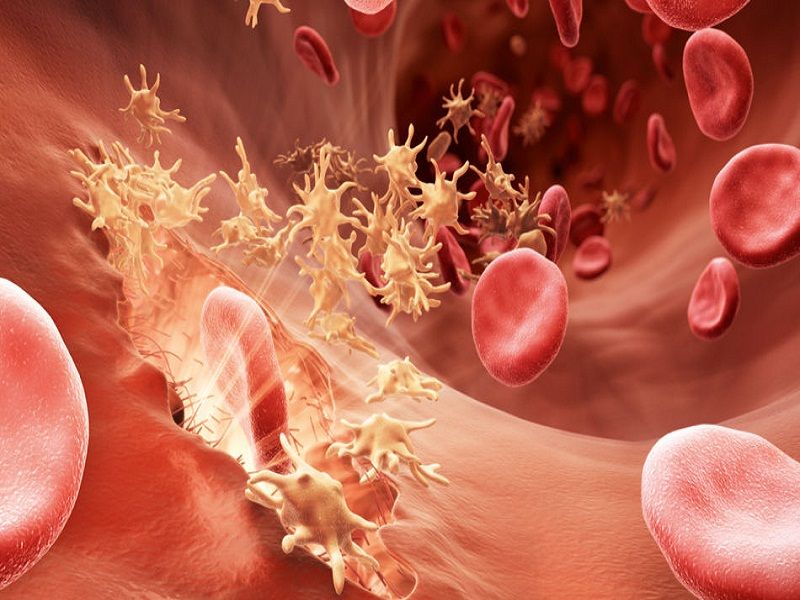Thrombosis is a process in which the flowing blood coagulates and turns into a blood clot, such as cerebral artery thrombosis (causing cerebral infarction), deep vein thrombosis of the lower extremities, etc. The formed blood clot is a thrombus; the blood clot formed in a certain part of a blood vessel migrates along the bloodstream and is incarcerated to another blood vessel. The process of embolization is called embolism. The deep vein thrombosis of the lower limbs falls off, migrates, and is incarcerated to the pulmonary artery and causes pulmonary embolism. ; The blood clot that causes the embolism is called an embolus at this time.
In daily life, a blood clot is blown out after a nosebleed is stopped; where a bruise is injured, a lump can sometimes be felt, which is also a thrombus; and myocardial infarction is caused by the interruption of blood flow when the coronary artery that innervates the heart is blocked by a blood clot Ischemic necrosis of the myocardium.

Under physiological conditions, the role of thrombosis is to stop bleeding. The repair of any tissues and organs must first stop bleeding. Hemophilia is a coagulopathy caused by a lack of coagulation substances. It is difficult to form thrombus in the injured part and cannot effectively stop bleeding and cause bleeding. Most hemostatic thrombosis forms and exists outside the blood vessel or where the blood vessel is broken.
If a blood clot forms in a blood vessel, the blood flow in the blood vessel is blocked, blood flow is reduced, or even blood flow is interrupted. If thrombosis occurs in the arteries, it will cause organ/tissue ischemia and even necrosis, such as myocardial infarction, cerebral infarction, and lower extremity necrosis/amputation. The thrombus formed in the deep veins of the lower extremities not only affects the flow of venous blood into the heart and causes swelling of the lower extremities, but also falls off through the inferior vena cava, right atrium and right ventricle to enter and incarcerate into the pulmonary artery, resulting in pulmonary embolism. Diseases with high mortality rates.
Thrombosis initiation
In most cases, the initial link of thrombosis is injury, which can be trauma, surgery, plaque rupture in arteries, or even endothelial damage caused by infection, immunity and other factors. This process of thrombus formation initiated by injury is called the exogenous coagulation system. In a few cases, blood stasis or slowing of blood flow can also initiate the process of thrombosis, which is a way of contact activation, called the endogenous coagulation system.
Primary hemostasis
Once the injury affects the blood vessels, the platelets first adhere to form a single layer to cover the wound, and then are activated to aggregate to form clumps, which are platelet thrombi. The whole process is called primary hemostasis.
Secondary hemostasis
The injury releases a coagulation substance called tissue factor, which starts the endogenous coagulation system to produce thrombin after entering the blood. Thrombin is actually a catalyst that turns the coagulation protein in the blood, that is, fibrinogen into fibrin. , The whole process is called secondary hemostasis.
"Perfect Interaction" Thrombosis
In the process of thrombosis, the first stage of hemostasis (platelet adhesion, activation and aggregation) and the second stage of hemostasis (thrombin production and fibrin formation) cooperate with each other. Second-stage hemostasis can only be carried out normally in the presence of platelets, and the formed thrombin further activates the platelets. The two work together and work together to complete the process of thrombosis.


 Business card
Business card Chinese WeChat
Chinese WeChat English WeChat
English WeChat